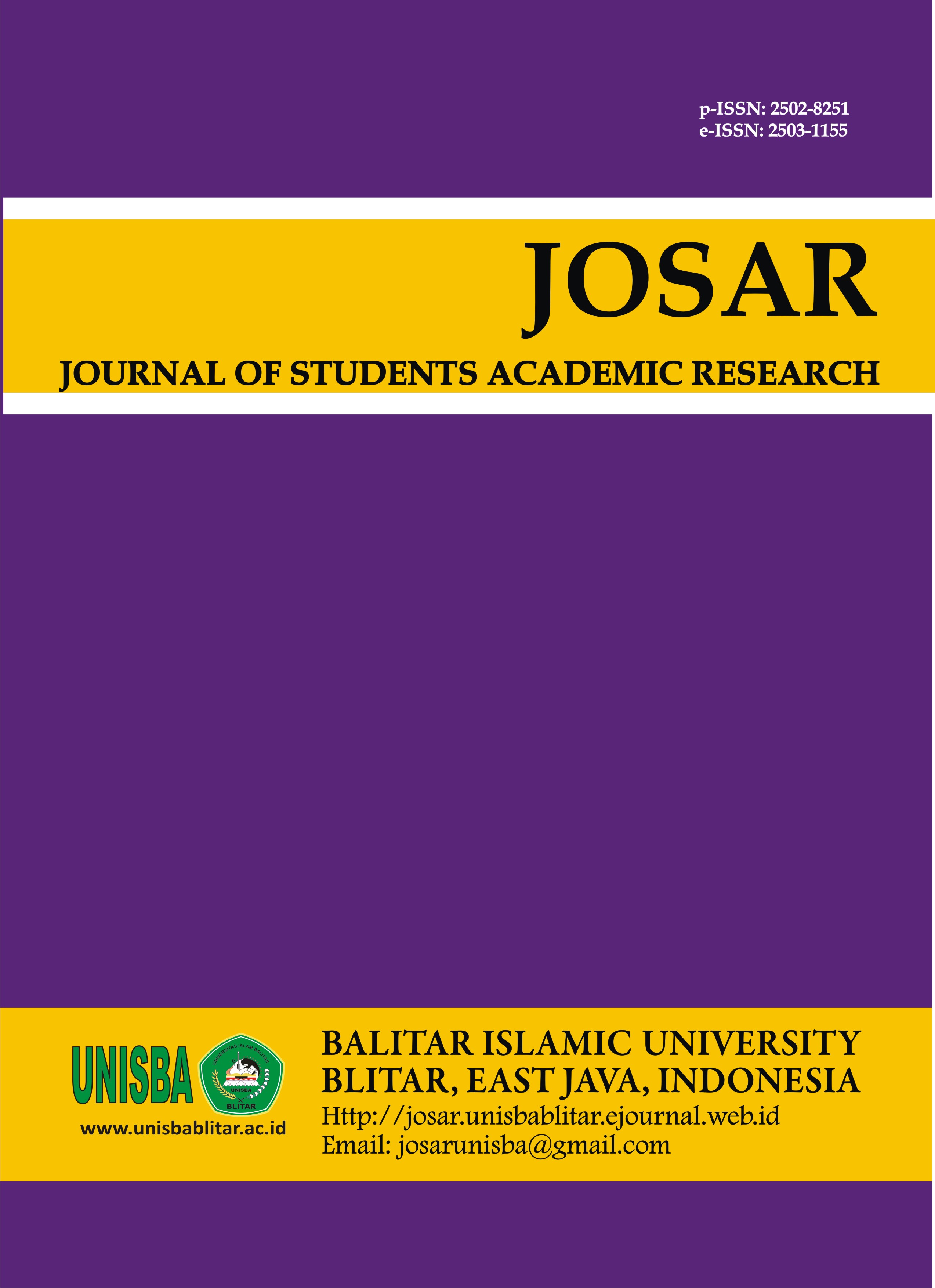Application of Expert Systems to Determine I'rob Signs in a Kalimah Using the Forward Chaining Method
DOI:
https://doi.org/10.35457/josar.v6i1.1460Keywords:
application, expert system, irob, forward chainingAbstract
The existence of technology that is increasingly developing the teaching and learning process will be more efficient and maximized, by presenting an effective and fun learning method so that students or students will be more enthusiastic in learning. The Nasyrul Ulum Islamic Boarding School is one of the salafy Islamic boarding schools located in Modangan village, Nglegok District. In the Islamic boarding school environment, students are required to be able to read the yellow book or kitap without harokat. To find out the harokat, students must first understand the knowledge of nahwu so that we need a system that can help easily understand the science of nahwu, especially the signs of I'rob. The results to be obtained from this research are in the form of an expert system application to determine the I'rob sign by applying the Forward Chaining method. This application is expected to help and make it easier for students and application users to determine or understand the signs of I'rob in a sentence. From the results of expert validation testing by testing 51 rules and with 10 case examples, 100% valid data was obtained from experts who were familiar with the knowledge of nahwu chapter ‘alamatil I'rob by paying attention to the adjustment of certain explanations.
References
[2] J.Irawan, Buku Pegangan Kuliah Sistem Pakar, STIKOM, Surabaya, 2007.
[3] Kusrini. 2008. Aplikasi system pakar menentukan factor kepastian pengguna dengan metode kuantifikasi pertanyaan. Yogyakarta:CV Andi.
[4] Ja’far Abu Yusuf Ahmad.2018.Ilmu Nahwu Untuk Pemula.Kairo:Dar Al-Furqon.
[5] Sitorus, Lamhot. 2015. Algoritma Dan Pemrograman.Yogyakarta: CV. Andi Offset.
[6] Fitriasari, Dewi & Deny Arnos Kwary. 2007. Accounting Information System.
Jakarta: Salemba Empat.
[7] Sulianta, Feri, Fajri Rakhmat Umbara. 2015. Teknik Hebat Merancang Aplikasi Instan Berkualitas. Jakarta : PT Elex Media Komputindo.
Downloads
Published
Issue
Section
License
Authors who publish in this journal agree to the following terms:
- Authors retain copyright and grant the journal right of first publication with the work simultaneously licensed under a Creative Commons Attribution License that allows others to share the work with an acknowledgment of the work's authorship and initial publication in this journal.
- Authors are able to enter into separate, additional contractual arrangements for the non-exclusive distribution of the journal's published version of the work (e.g., post it to an institutional repository or publish it in a book), with an acknowledgment of its initial publication in this journal.
- Authors are permitted and encouraged to post their work online (e.g., in institutional repositories or on their website) prior to and during the submission process, as it can lead to productive exchanges, as well as earlier and greater citation of published work (See The Effect of Open Access).
Deprecated: json_decode(): Passing null to parameter #1 ($json) of type string is deprecated in /home/ejournal.unisbablitar.ac.id/public_html/plugins/generic/citations/CitationsPlugin.php on line 68










